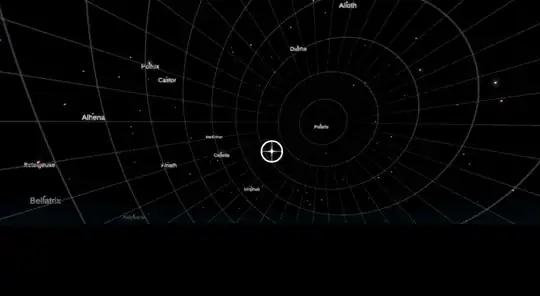If you do not require arcminute precision, you can approximate Greenwich sidereal time as the Earth rotation angle $\theta(t)$.
IERS Technical Note 32 §5.4.4 gives
$$ \begin{align}
\theta(t) &= 2 \pi (0.77905~72732~640 + 1.00273~78119~11354~48~ t) \\
&\approx 280.46^\circ + 360.985612^\circ~ t
\end{align} $$
where $t$ is a real number of days since JD 2451545.0 (2000-01-01 12:00 TT ≈ 11:59 UTC).
For an observer at north latitude $\phi$ and east longitude $\lambda$, things should line up like this:
Local sidereal time $ = \mathrm{LST} \approx \theta(t) + \lambda$
Zenith (RA, Dec) $ = (\alpha, \delta) = (\mathrm{LST},~ \phi)$
North horizon $(\alpha, \delta) = \begin{cases}
(\mathrm{LST + 12h},~ 90^\circ - \phi) & \mathrm{if}~\phi >= 0 \\
(\mathrm{LST},~ 90^\circ + \phi) & \mathrm{if}~\phi < 0
\end{cases}$
East horizon $(\alpha, \delta) = (\mathrm{LST + 6h},~ 0^\circ)$
The transformation between equatorial and horizontal coordinates can be composed of two rotations, similar but not necessarily identical to those in Wikipedia: Celestial coordinate system.
For example, you could:
- Start with the north horizon vector pointing at the north celestial pole, and the zenith vector pointing at (0h, 0°).
- Rotate the ground counterclockwise as seen from the north horizon vector by LST.
- Rotate the ground clockwise as seen from the east horizon vector by $\phi$.
